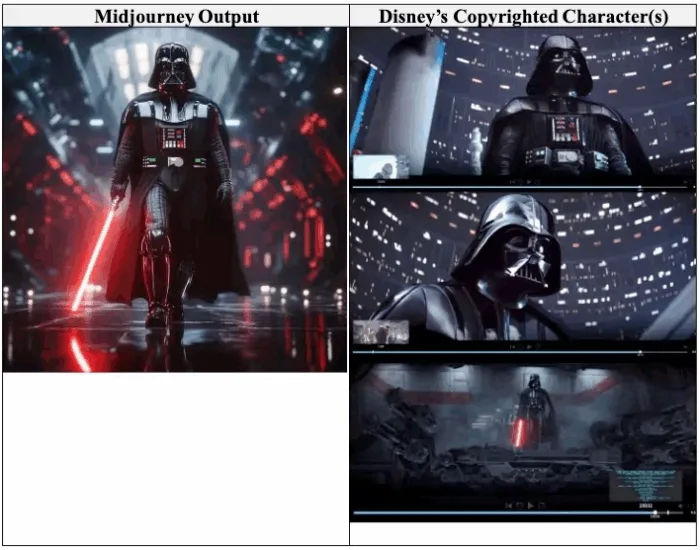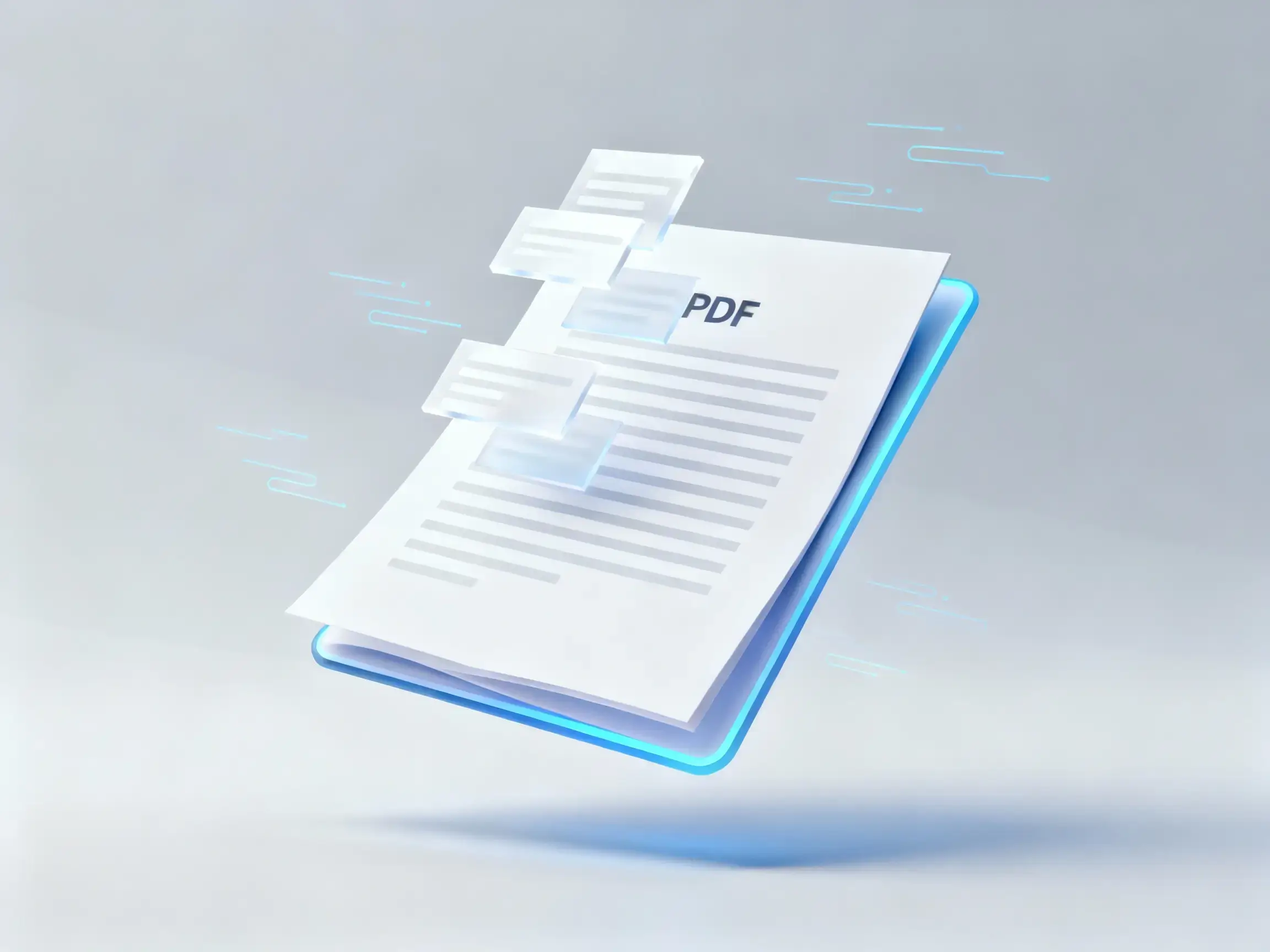
Earlier today, Disney and Universal teamed up to file a lawsuit alleging copyright infringement against Midjourney, the creator of the Midjourney AI system.
On the surface, it would be easy to dismiss this case as just another copyright infringement lawsuit filed against AI companies. However, two things make it (relatively) unique.
First, the lawsuit was filed by two film companies and their subsidiaries. Although we’ve seen lawsuits from authors, photographers, and news organizations, film companies have been relatively quiet when it comes to copyright and AI.
If anything, the film studios have been among the most prominent supporters of AI. Artificial intelligence and the studios’ desire to use it were a key focal point of the 2023 writers’ strike. This makes the lawsuit a significant development in the AI legal space.
Second, the lawsuit doesn’t just focus on the use of copyright-protected works for AI training. Instead, it heavily examines Midjourney’s output, including how trivially it recreates copyrighted characters. In addition to the AI itself, the lawsuit targets other Midjourney practices, such as its gallery, which features user-created works.
Although other lawsuits have examined the output of AI systems, including The New York Times’ lawsuit against OpenAI and Microsoft, this case places a much greater emphasis on the allegedly infringing output.
This raises two questions: What will become of this lawsuit? And why file it now? To answer that, we need to look more closely at the filing.
Understanding the Lawsuit
According to the lawsuit, the dispute between the parties has been ongoing since at least November 2024. That was when lawyers representing Disney sent Midjourney a letter, pointing out that their AI system was creating images based on copyright-protected characters and works Disney owns.

The letter requested three things. First, Midjourney needed to identify which Disney works it had previously used to train its AI systems; second, it needed to cease making unauthorized copies of Disney works. Finally, it needed to implement steps to prevent unauthorized copying by Midjourney’s users.
According to the lawsuit, Disney never received a response from Midjourney beyond a brief receipt confirmation. Universal sent a similar letter in May 2025.
That lack of response prompted Universal and Disney to file the lawsuit. The lawsuit focuses heavily on the fact that Midjourney clearly used copyright-protected works in training and then provided users with no restrictions in generating new infringing works.
According to the filing, this isn’t because Midjourney is incapable of preventing the infringement. The plaintiffs note that Midjourney has guardrails in place that block users from generating content with violence, nudity, or hate speech. However, there are no such guardrails for copyright infringement.
The plaintiffs claim that Midjourney should be aware of the infringement, especially since many infringing works are prominently featured in its public gallery.
Ultimately, the plaintiffs are suing over both direct copyright infringement and secondary copyright infringement. In both claims, they argue that Midjourney infringed by developing and training its system on content owned by Disney and Universal. They further claim that the output constitutes unauthorized derivative works and that Midjourney utilized such works to promote its service.
The plaintiffs are seeking unspecified damages as well as an injunction barring future infringement.
Why Now?
This is, with little doubt, one of the most significant lawsuits against an AI company. Universal and Disney are both industry giants, and they are teaming up to file this case.
However, there is little doubt that they are late to the party. The original parade of AI lawsuits was filed in 2023. Many of those cases are over two years old. Why did the movie studios show up now?
One factor, most likely, is the statute of limitations. A recent Supreme Court decision made it clear that you can claim damages from farther back as long as you file the lawsuit in a timely manner. That means filing it within three years of learning of the infringement.
The lawsuit doesn’t specify when the studios became aware of the infringement. However, it clearly states that they were not aware of Midjourney when it first launched in February 2022. It reads, “Unbeknownst to Plaintiffs, Midjourney first launched its Image Service in February 2022.”
Though we don’t know when the plaintiffs learned of Midjourney, it likely happened sometime before October 2023, when Midjourney launched its website. As such, the clock on filing a lawsuit was likely starting to run out.
But that doesn’t explain why they waited so long. To that end, they likely saw little benefit in being at the front of the pack. Being among the first to file a lawsuit over a new technology is a risky strategy. Even if copyright holders ultimately prevail broadly, there are numerous pitfalls that each individual case could fall into.
By waiting, they can observe how other cases unfold and then utilize their litigation budget to adjust and refine their approach. A good example is the recent Reuters ruling, which doesn’t deal with a generative AI, but can offer some early guidance.
Bottom Line
This case may already be the most important lawsuit filed against an AI company. If nothing else, the sheer size of the plaintiffs makes this one worth watching. Universal and Disney are both industry giants with litigation budgets to match.
The lawsuit makes very compelling arguments and targets the entirety of Midjourney’s process, from development to promotion to user generation.
However, I don’t think that this necessarily means the film studios are turning against AI. Their targeting of Midjourney was very specific. Although they claim that using copyright-protected works to train AI systems constitutes infringement, they don’t hinge their entire case on that.
They chose Midjourney over other AI image generators because it lacks the guardrails to prevent users from creating derivative works. The case repeatedly notes that other AI services have implemented such guardrails, making this a central issue in the case.
Regardless of the reasons, two juggernauts have entered the AI litigation landscape. Although other cases will likely conclude sooner, this one will still be worth watching. How and why this case concludes may go a long way to determining how AI systems are trained and what their users can do with them.
Want to Reuse or Republish this Content?
If you want to feature this article in your site, classroom or elsewhere, just let us know! We usually grant permission within 24 hours.
.png)




